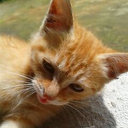[Optimal treatment parameters for damage of chicken comb vessels using chlorophyll derivative IV in photodynamic therapy].
Кључне речи
Апстрактан
OBJECTIVE
To define the optimal treatment parameters of chlorophyll derivative IV (CPD4) in photodynamic therapy(PDT) of port wine stains(PWS) by observing the morphological changes of chicken combs.
METHODS
102 animals were divided into 6 groups at random, including 3 control groups(given no treatment, given light without photosensitizer or given photosensitizer without light) and 3 experimental groups treated with different CPD4 dosages(5, 7.5, 10, 12.5, 15 mg/kg body weight), power density(50, 100, 150, 200 mW/cm2), energy density (15, 30, 45, 60, 120, 135, 180 J/cm2) and different intervals between CPD4 injection and irradiation (immediately, 5, 10, 20, 30, 60, 120, 180, 240 minutes). The main emitting peak of light source was at 650 nm, and CPD4 was injected intravenously, then the appearance of chicken comb was recorded everyday. The prepared sections were stained with HE. The histological changes of chicken comb were observed by light microscope.
RESULTS
The control animals showed no significant comb changes, while the PDT could cause blanching of the chicken comb in the experimental group. The histologic changes included damage of erythrocytes and endothelial cells, vascular rupture, hemorrhage or disappearance, denaturation of perivascular collagen fiber and local necrosis of chicken combs. The treatment parameters which caused the most obvious blanching of the chicken comb were 7.5-10 mg/kg body weight of CPD4 dosage, 100-150 mW/cm2 of power density, 60-90 J/cm2 of energy density, and the intervals between CPD4 injection and irradiation were 0-20 minutes.
CONCLUSIONS
CPD4 in PDT can cause selective damage of dermal capillaries in chicken comb and blanching of the chicken comb with optimal treatment parameters. The results will offer the basis for further investigation of clinic treatment parameters.






